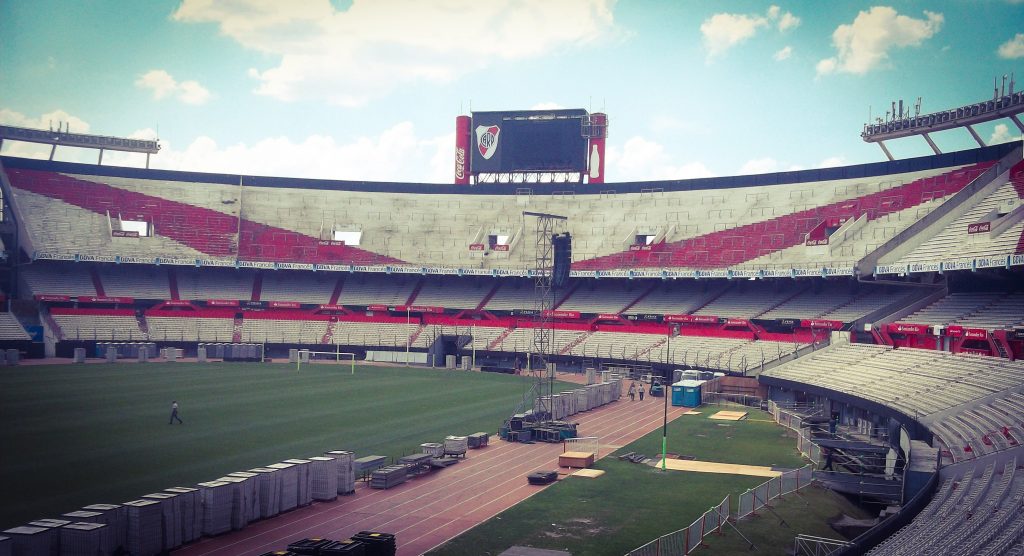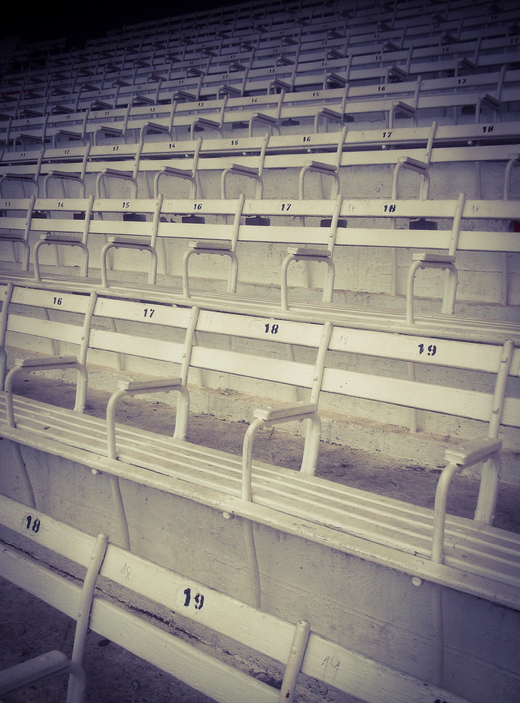If like me, you have stark memories of FIFA World Cup Argentina 1978 then one of your most vivid recollections might be Mario Kempes and the ticker tape.
Back in 2012 I stood inside the fabled home of River Plate mesmorized at the stadium that surrounded me. Standing on the tour I closed my eyes and thought back to Argentina 1978 remembering as a small boy being at home and watching on as Daniel Passarella lifted the World Cup.
As the teams walked out for that final an avalanche of sky-blue and white ticker tape reigned down from the heights and the watching South American fans roared a cacophony of passion.
Even as Kempes ran away for his opening goal so the ticker tape still littered the field and the noise got louder.
This was El Monumental at its best.
History
The Río de la Plata begins at the confluence of the Uruguay and Paraná rivers and flows eastward into the South Atlantic Ocean. Although it is generally spoken of as a river, the Río de la Plata is considered by some to be a large bay.
In 1901 Club Atletico River Plate was founded.
The football institution was formed from the merger of two clubs, “Santa Rosa” and “La Rosales”. The name River Plate (the English name for the Rio de la Plata) was chosen in the belief that such an ‘enigmatic’ inscription was suitable for a football club.
The club’s first home was located in Darsena Sur (in the Boca, San Telmo areas of the capital) but after 5 years they were evicted and moved to Sarandi some 10km south.
The next 10 years saw a wondering existence with the club sharing for a while with Ferro Carril in Cabalitto before moving back to the Boca district.
In 1920 River Plate become champions of Argentina and again soon after they moved this time north to a stadium in Alvear and Teagle.
By the 1930’s the club was known as the Los Millonarios (The Millionaires) thanks to the purchase of Argentine International legend Carlos Peucelle. Peucelle had gained the nickname “El Primer Millonario” because of his big money transfer from Sportivo Buenos Aires.
It would be 33 years from foundation before River Plate bought land for the purpose of its first own football ground. In 1934 they took a plot in the Nuñez district, a year later on 25th May the cornerstone of the new stadium was laid.
On 27th Sept 1936 the construction of El Monumental commenced with the overall spending by completion being $3m.
The ground opened with a fixture between River Plate vs. Penarol of Uruguay in May 1938. Almost 70,000 people turned up for the match.
For many years the stadium was a herradura (horseshoe shaped) but in 1958 the club finally had the funds to complete the construction of the North Stand. This was done thanks to the sale of Omar Sivori to Juventus for a world record 10 million pesos.

El Monumental underwent further developments in 1977 with a view to the FIFA World Cup. A second tier was also put on the North (Belgrano) Stand. Changes to the lower tiers meanwhile reduced the capacity of the stadium to the 72,000 who witnessed the 1978 World Cup Final.
El Monumental was the centrepiece venue of the 1978 World Cup, hosting three matches during the first group phase, another three in the second group phase, the match for third place, and the final between Argentina and Holland (3-1).
In 1986, El Monumental was officially renamed Estadio Antonio Vespucio Liberti in honour after the president who initiated its construction.
Redevelopment
A lowering of the field is the first significant step towards implementation of the 2013 vision River Plate had of expanding El Monumental to a stadium fit for the 21st centiry and 80,000 supporters.
The key change is that the running track currently in place will go and a lower ring of stands will move towards the field, bringing fans much closer to players.
River Plate will introduce a next generation hybrid pitch system which will compete with the best on offer throughout the world. The club’s existing field will be replaced by a state-of-the-art SISGrass hybrid grass system, supported with undersoil SISAir aeration system which will create a stronger playing surface, by increasing aeration and moderating temperature in the root zone.
River have allocated 177 million peso ($2.4 million) towards the field replacement.
SISAir has been used successfully in many stadiums around the world including at the Luzhniki stadium in Moscow for the World Cup Final in 2018. SISAir includes heating and cooling systems, which will prevent seasonal deterioration of the playing field and meet the demanding climate conditions in Argentina which can verge from the very cold in the winter months to extreme heat in November.
The concept envisages increasing capacity by 20,000 without demolishing the existing stands. The entire lower tier will be built anew, sitting on top of the old one.
An additional 7 rows will also be added on top of the stadium, resting on tall pylons. And finally, two levels of skyboxes will be created on three sides of the stadium between the two regular tiers.
The Centenario stand, will be left with only regular seating.
The external pylons won’t only support extra seating, but more importantly will be the base for Monumental’s first ever stadium roof. The cable canopy structure will accommodate lighting and a panoramic giant screen. Also, the pylons will support five rings of external cladding, white by day and illuminated by night to improve aesthetics like many stadia in Europe.




